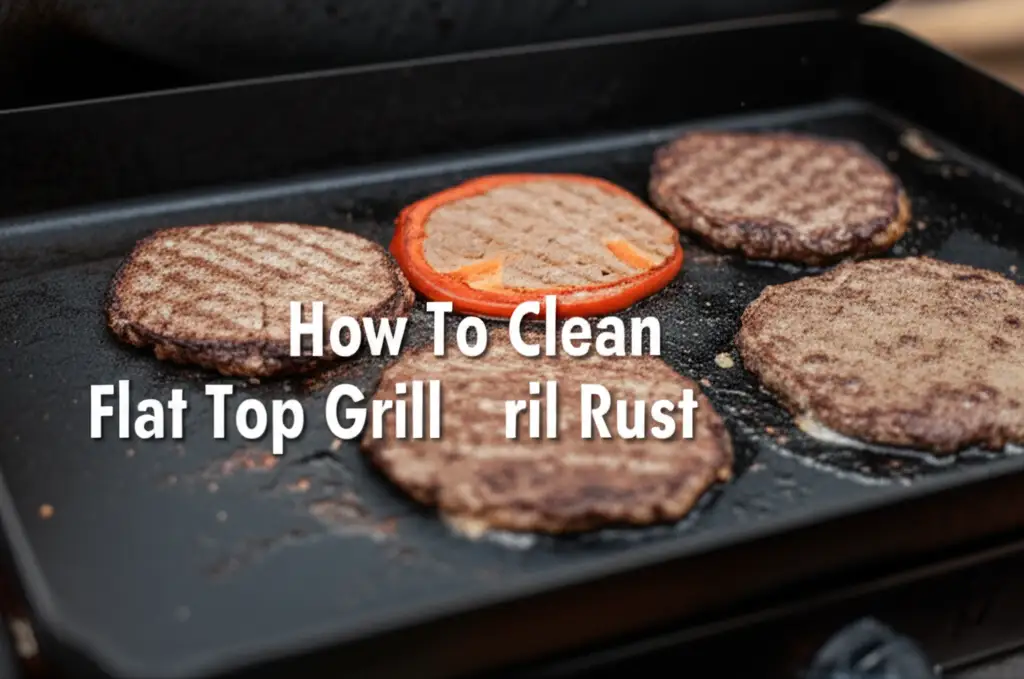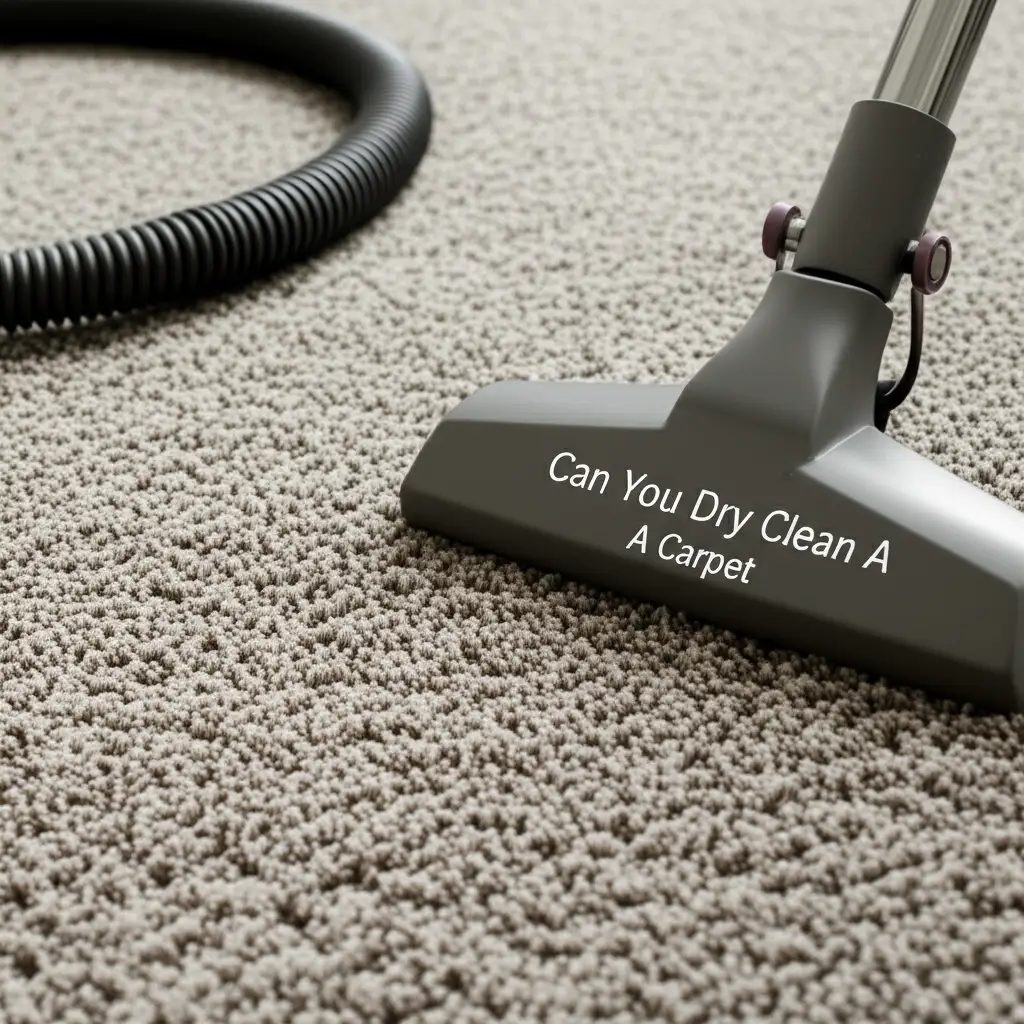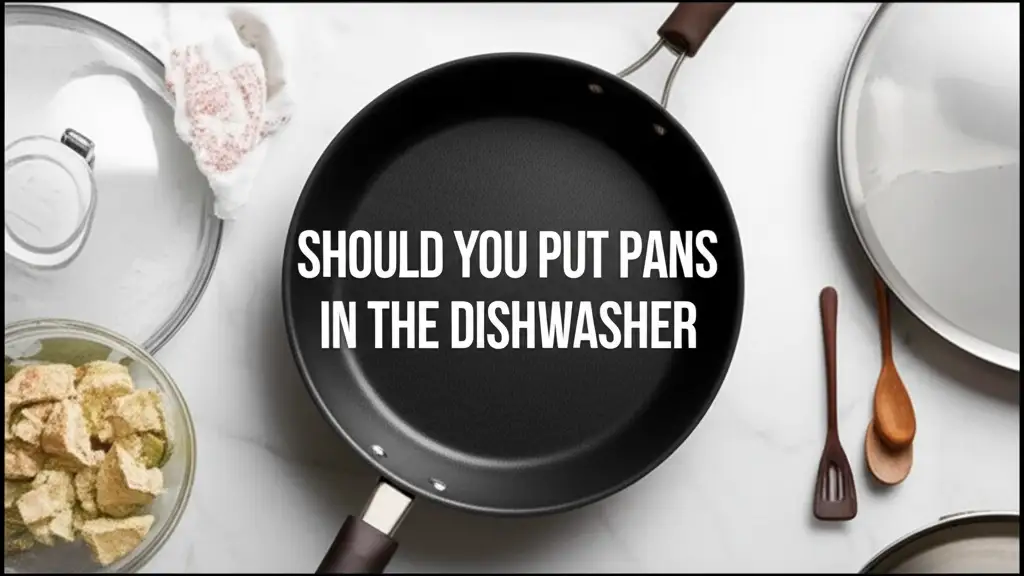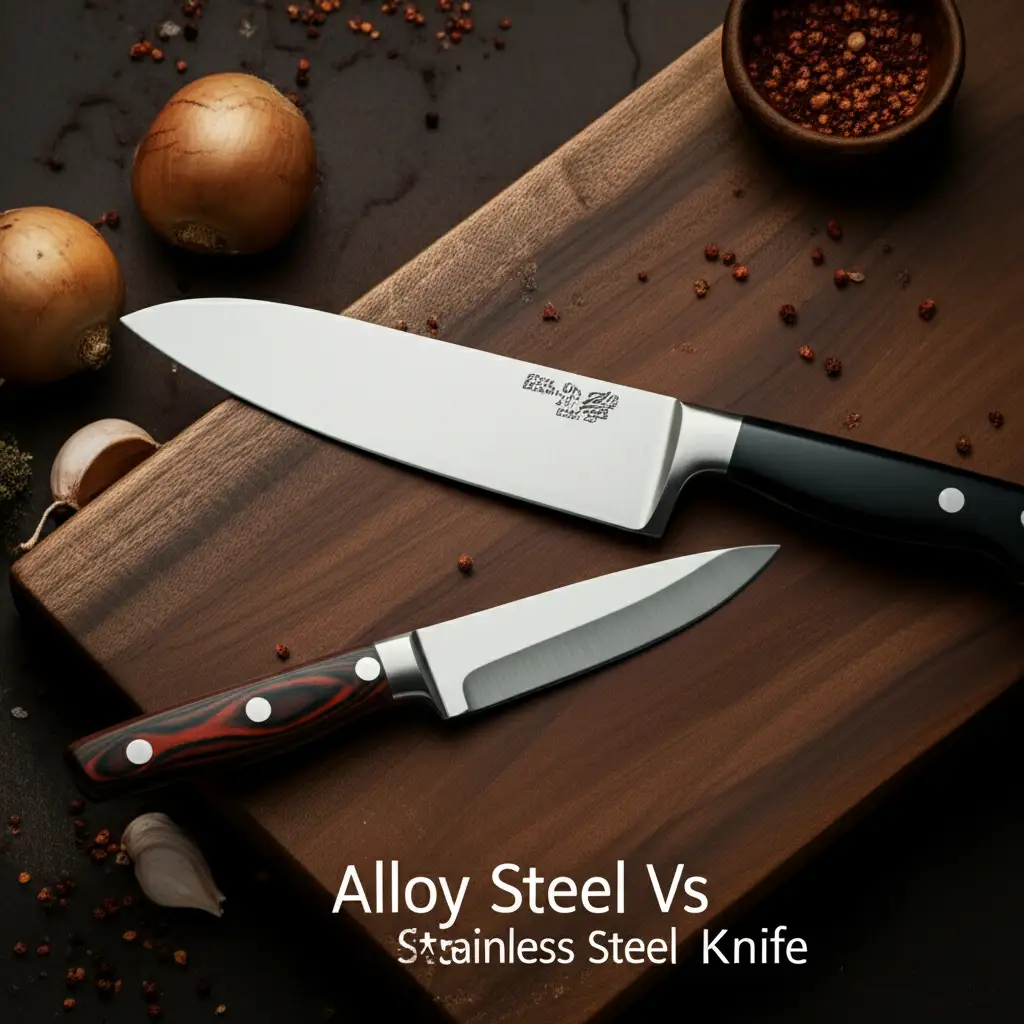· Elira Thomsen · Grill Care · 14 min read
How To Clean Flat Top Grill Rust

Restore Your Flat Top: How To Clean Grill Rust Effectively
Imagine stepping out to your flat top grill, ready to cook a delicious breakfast. Suddenly, you see it—patches of orange-brown rust on your griddle surface. This sight can be quite discouraging. Rust on a flat top grill is not just ugly; it also affects your cooking performance and even food safety. You might wonder how to clean flat top grill rust properly.
A rusty griddle can transfer unpleasant flavors to your food. It can also create an uneven cooking surface. This problem often comes from moisture, improper cleaning, or leaving the grill exposed. But do not worry; fixing this issue is simpler than you think. This article will guide you through effective methods to clean flat top grill rust. We will cover everything from essential tools to preventive measures. Let’s make your flat top grill shine like new again.
Takeaway
- Identify rust type: Surface rust is easier to remove than deep pitting.
- Gather necessary tools: Scraper, bricks, oil, sandpaper are key.
- Choose a method: Use abrasive tools for heavy rust or acidic solutions for light rust.
- Re-season the griddle: This protects the metal after cleaning.
- Prevent future rust: Keep the griddle dry and seasoned.
To effectively clean flat top grill rust, first scrape away loose debris. Next, use a grill brick or coarse sandpaper with cooking oil to scrub the rusty areas. Finish by thoroughly rinsing and then re-seasoning the griddle surface to prevent future corrosion.
Understanding Flat Top Grill Rust: Why It Forms
Rust forms when iron reacts with oxygen and water. This chemical reaction creates iron oxides, which we know as rust. Flat top grills are often made from steel, an iron alloy. This makes them prone to rusting if not cared for properly. Many factors contribute to rust formation on your griddle.
One main cause is moisture. Leaving your flat top grill exposed to rain or high humidity invites rust. Water droplets combine with oxygen to start the rust process. Even condensation from temperature changes can be enough. A grill cover helps, but it must be breathable to avoid trapping moisture.
Another cause is improper cleaning. After cooking, food residues or acidic sauces can sit on the griddle. If you do not clean these off completely, they can hold moisture against the metal. This accelerates rust formation. Using harsh chemicals that strip the seasoning layer also makes the surface vulnerable.
A damaged seasoning layer is also a big problem. A flat top grill needs a well-maintained seasoning layer. This layer is baked-on oil that protects the metal. If this layer is worn away or scratched, the bare metal gets exposed to air and moisture. This creates perfect conditions for rust to appear. Regular seasoning is important for rust prevention. Think of seasoning as a protective shield for your grill.
Essential Tools and Cleaning Agents for Rust Removal
Having the right tools makes cleaning flat top grill rust much easier. You do not need many specialized items. Most are common household or grill care products. Gathering them beforehand saves time and effort. I always prepare my tools before starting a big cleaning job.
First, you will need a stiff metal spatula or grill scraper. This tool helps remove loose rust flakes and stuck-on food. A good scraper gets under the stubborn bits. Next, consider abrasive materials. Grill bricks are excellent for scrubbing rust. They are designed to conform to the griddle surface. Coarse-grit sandpaper, like 80-grit, also works well for grinding away rust. Steel wool or a scouring pad can handle smaller rust spots.
For cleaning agents, cooking oil is essential. Vegetable oil, canola oil, or flaxseed oil work best. Oil acts as a lubricant for abrasive tools. It also helps lift rust particles. After cleaning, oil is vital for re-seasoning. Some methods use acidic solutions. White vinegar is a natural acid that can dissolve light rust. A mix of equal parts vinegar and water is often used. Lemon juice can also work similarly.
You will also need cleaning cloths or paper towels. These help wipe away rust and oil. A spray bottle can make applying vinegar or water easier. For safety, wear heavy-duty gloves to protect your hands. Safety glasses are also a good idea to protect your eyes from flying debris. These tools ensure you can tackle any rust problem safely and effectively.
Step-by-Step Guide: Cleaning Mild Rust from Your Griddle
Cleaning mild rust from your flat top grill is a straightforward process. It does not take much time if the rust is only on the surface. I find that quick action prevents small spots from becoming big problems. This method uses common items you likely already have.
First, heat your flat top grill to a medium temperature. Heating helps loosen any stuck-on debris and makes the rust easier to remove. Let it heat for about 10-15 minutes. Once hot, turn off the burners. Be careful when working on a hot surface.
Next, use your grill scraper or metal spatula to scrape off any loose rust or food particles. Push the debris into the grease trap. Apply firm pressure. You want to remove as much surface rust as possible this way. This step prepares the surface for deeper cleaning.
Now, apply a generous amount of cooking oil to the rusty areas. Use enough oil to coat the rust well. Then, take a grill brick or a piece of coarse sandpaper. Begin scrubbing the rusty spots. Work in small circular motions. The oil will lubricate the surface and help lift the rust away. You will see the rust turn into a black paste. Continue scrubbing until the rust is gone. This might take some effort, but consistency pays off.
After scrubbing, wipe away the black residue with paper towels or a clean cloth. You may need to use several towels. Continue wiping until the surface is clean. If some rust remains, reapply oil and scrub again. Once clean, apply a thin layer of fresh cooking oil to the entire griddle surface. This protects the newly cleaned metal. This simple method works well for early signs of rust.
Tackling Stubborn Rust: Advanced Cleaning Techniques
Sometimes, mild rust becomes stubborn. This happens if the rust has penetrated deeper into the metal. When facing tougher rust on your flat top grill, you need more aggressive methods. These techniques require patience and persistence.
One effective method involves using a pumice stone or a heavier-duty grill brick. Heat your griddle slightly. Apply cooking oil directly to the rust spots. Then, use the pumice stone or grill brick with firm, circular motions. The abrasive nature of these tools helps to grind away deeply embedded rust. You will need to apply significant pressure. Keep adding oil as you scrub. This creates a slurry that carries away the rust particles. This method is similar to grinding, so ensure you have enough oil to prevent scratching.
Another approach for very stubborn rust is using a vinegar paste. Mix equal parts white vinegar and baking soda to form a thick paste. Apply this paste directly onto the rusted areas. Let it sit for about 30 minutes to an hour. The acid in the vinegar reacts with the rust, helping to loosen it. The baking soda provides a gentle abrasive. After soaking, use a wire brush or heavy-duty steel wool to scrub the rust away. Rinse the area thoroughly with water. Be sure to dry it immediately.
For extreme cases, specialized rust removers exist. These products often contain strong chemicals. Always follow the manufacturer’s instructions carefully when using them. Wear protective gear like gloves and safety glasses. After using any chemical cleaner, it is critical to rinse the griddle extremely well. You must ensure no chemical residue remains before cooking. No matter the method, thorough rinsing and immediate drying are vital steps to prepare for re-seasoning.
Restoring and Re-Seasoning Your Flat Top Grill
After successfully cleaning flat top grill rust, restoring the protective seasoning layer is critical. This step prevents new rust from forming and ensures non-stick cooking. A proper re-seasoning creates a durable, non-stick surface. I always consider this the most important step after any deep cleaning.
First, ensure your griddle is completely dry and clean. Any water left on the surface can cause flash rust. Wipe it down with a clean, dry cloth. You want no rust residue or cleaning agents remaining. This prepares the surface for the oil to bond properly.
Next, apply a very thin layer of high smoke point cooking oil to the entire griddle surface. Oils like flaxseed oil, grapeseed oil, or canola oil work well. Use a paper towel to spread the oil evenly. You want a thin, barely visible film. Too much oil will result in a sticky, gummy surface. Make sure to wipe off any excess oil.
Now, heat your flat top grill to a high temperature. Turn on all burners to their highest setting. Let the grill heat until the oil begins to smoke. This usually takes about 15-20 minutes. The oil will polymerize, creating a hard, protective layer. When the smoke stops, turn off the burners and let the griddle cool down completely.
Repeat this oiling and heating process at least 3-5 times. Each layer builds upon the last, creating a stronger, darker seasoning. The griddle surface will turn dark brown or black. This indicates a good seasoning has formed. This robust layer protects your griddle from moisture and makes cooking easier. A properly seasoned grill is a joy to cook on.
Preventing Future Rust on Your Flat Top Grill
Preventing rust is easier than removing it. Once you know how to clean flat top grill rust, the next step is to keep it from coming back. Consistent maintenance forms the best defense against corrosion. My routine keeps my griddle ready for cooking at any time.
The most important step is to keep your flat top grill dry. After every use, clean the griddle thoroughly. Scrape off all food debris. Wipe it down with a damp cloth to remove grease. Then, dry the surface immediately and completely. You can even turn the burners on low for a few minutes to evaporate any remaining moisture. This ensures no water is left on the metal.
Regular re-seasoning is also key. After cleaning and drying, apply a thin layer of cooking oil. Spread it evenly over the entire griddle surface. This light coat of oil protects the metal from air and moisture. This creates a barrier. Do this after every significant use or cleaning session. The more you use and re-season your griddle, the better its protective layer becomes.
Store your flat top grill in a dry place. If it is an outdoor unit, use a high-quality grill cover. Ensure the cover is breathable to prevent moisture buildup underneath. If possible, store portable griddles indoors. Protecting your grill from the elements significantly reduces rust risk. Just as you might clean certain parts of a gas grill to prevent issues, like cleaning gas grill venturi tubes for optimal gas flow, proper covering and regular maintenance keep your flat top rust-free.
Avoid using harsh chemicals or abrasive soaps for daily cleaning. These can strip the seasoning layer, leaving the metal exposed. Stick to warm water, mild soap if necessary, and your grill scraper. If you ever use a cleaning agent like vinegar to clean items, always ensure thorough rinsing and immediate drying. This ensures you do not inadvertently damage your griddle’s protective layer.
Common Mistakes to Avoid When Cleaning Grill Rust
Cleaning flat top grill rust can go wrong if you make common mistakes. Avoiding these errors saves you time and effort. It also protects your griddle from damage. I learned many of these lessons the hard way, so you don’t have to.
One common mistake is using steel wool or highly abrasive pads on a regular basis. While these are good for initial rust removal, frequent use can scratch the griddle surface deeply. These scratches can make the surface uneven. They can also create more places for rust to form in the future. Reserve aggressive abrasives for significant rust problems only.
Another error is not fully drying the griddle after cleaning. Any moisture left on the surface, even small droplets, can lead to flash rust. This happens very quickly. Always wipe the griddle completely dry. You can also briefly turn on the burners to help evaporate any water. Dryness is your biggest ally against rust.
Using too much oil during seasoning is another frequent mistake. A thick layer of oil will not polymerize properly. Instead, it will turn into a sticky, gummy residue. This sticky layer can attract dirt and make your griddle difficult to cook on. Always wipe off excess oil before heating for seasoning. The layer should be so thin that it looks almost dry.
Finally, neglecting regular maintenance is a big mistake. Cleaning rust is a one-time fix. Preventing it needs ongoing care. Not scraping your griddle after each use allows food particles to sit. Not re-oiling it after cleaning leaves the metal exposed. Skipping regular seasoning touch-ups weakens the protective layer. Consistent, simple steps after each cook are vital. This daily care is much easier than tackling major rust removal later.
FAQ Section
Q1: Can I use dish soap to clean rust off my flat top grill? A1: You should avoid using dish soap regularly on your flat top grill. Dish soap can strip away the essential seasoning layer. This layer protects the griddle from rust. For rust removal, stick to methods using oil or mild acids like vinegar. After cleaning rust, make sure to re-season the griddle properly. This maintains its non-stick and rust-resistant properties.
Q2: How often should I season my flat top grill to prevent rust? A2: You should apply a light coat of oil and heat your flat top grill after every major cleaning. This includes after scrubbing away rust. For regular use, a quick re-oiling after each cook is often enough. If you cook often, re-seasoning fully every few months is a good practice. This keeps the protective layer strong and prevents rust.
Q3: Is rust on a flat top grill safe for cooking? A3: No, rust on a flat top grill is not safe for cooking. Rust is oxidized iron. Ingesting small amounts might not be immediately harmful, but it can cause health issues. More importantly, rust affects food quality and makes your grill perform poorly. Always remove all rust before cooking. A clean, seasoned surface provides the best cooking experience.
Q4: What is the best oil for seasoning a flat top grill after rust removal? A4: High smoke point oils are best for seasoning a flat top grill. Flaxseed oil is excellent for its strong polymerizing properties. Canola oil, grapeseed oil, or vegetable oil also work very well. These oils can withstand high heat. They create a hard, durable seasoning layer. This layer protects your griddle from moisture and future rust.
Q5: Can I use steel wool to clean flat top grill rust? A5: You can use steel wool to clean stubborn flat top grill rust. However, use it carefully. Steel wool is very abrasive and can scratch the griddle surface. These scratches might create new areas for rust to form. For lighter rust, a grill brick or coarse sandpaper with oil is usually safer. Always re-season the griddle after using steel wool.
Q6: How long does it take to remove rust from a flat top grill? A6: The time it takes to remove rust varies. Mild surface rust might take only 15-30 minutes. This includes scraping, scrubbing, and initial re-oiling. Stubborn or widespread rust could take an hour or more. This is because it requires more aggressive scrubbing and multiple re-seasoning layers. Patience helps achieve the best results.
Conclusion
Tackling rust on your flat top grill can seem daunting at first. However, with the right approach, it is a manageable task. You now understand how to clean flat top grill rust effectively. We covered everything from knowing why rust forms to choosing the right tools. You learned specific techniques for both mild and stubborn rust. Restoring your griddle’s seasoning is also a vital step.
Remember, prevention is always easier than removal. Regular cleaning, proper drying, and consistent re-seasoning are your best defenses. By following these steps, you will keep your flat top grill looking great and performing its best. A rust-free griddle means more enjoyable cooking and delicious meals. Keep your flat top well-maintained. It will serve you for many years of memorable outdoor cooking. Happy grilling!





